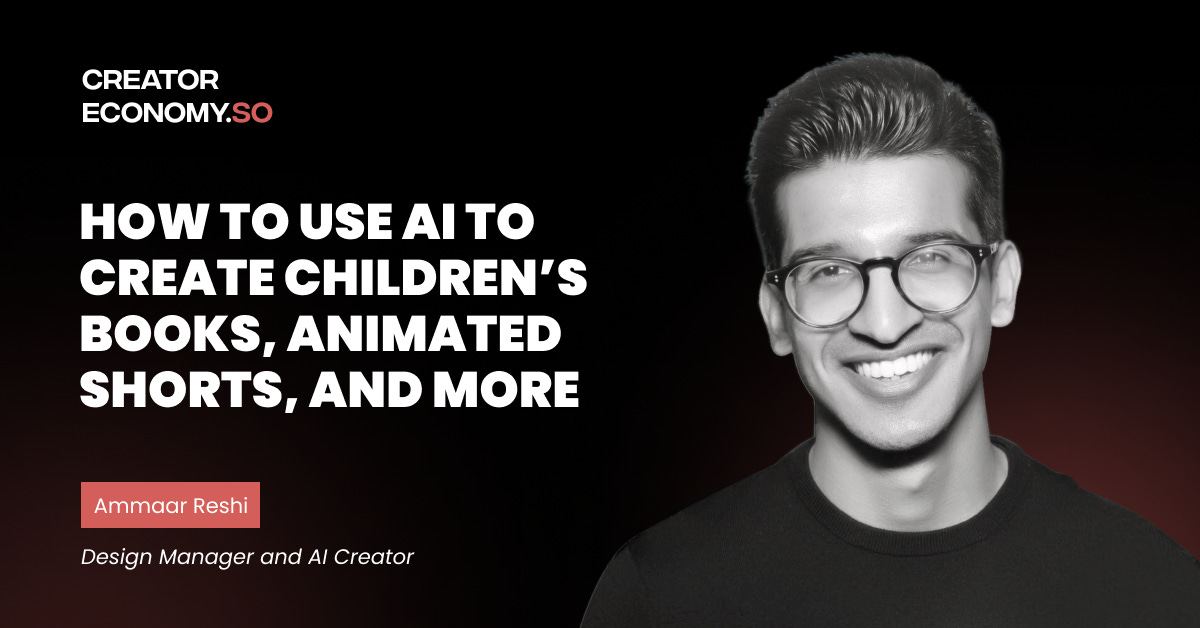Ammaar Reshi: How to use AI to Create Children’s Books, Animated Shorts, and More
A step by step guide to making high quality AI creations in a weekend
Level up your product and creator skills in just 5 min a week. Join 50,000+ readers:
Dear subscribers,
With the right tools, you can use AI to create something amazing in a single weekend.
Ammaar is a design manager who knows this better than most. His weekend AI projects have been featured by TIME, Washington Post, and other top publications. In our interview below, I asked Ammaar to walk through how he used AI to create:
A children’s book that went viral
A podcast with a past US president
An animated short featuring Batman
Read on if you’re interested in starting your own AI project this weekend.
How to create a children’s book with AI
Welcome Ammaar! How did you create your children’s book with AI?
I made the book in a single rainy weekend in San Francisco:
I wrote the story with ChatGPT. I wanted it to be about a child discovering the magic of AI. ChatGPT helped me brainstorm ideas and illustration prompts.
I created the illustrations with Midjourney. It took me a few hours to generate illustrations that had a consistent style for my story.
I published the book on Amazon. Kindle direct publishing made this super easy.
The book was a fun experiment and I didn’t think too much about it. But it went incredibly viral and was covered by media outlets like BuzzFeed, TIME, and NBC.
i tried to use Midjourney myself and it struggles to create consistent characters across images. Do you have any tips for doing that?
Yeah, I was struggling too and almost gave up. What ended up working was narrowing down my prompt to a few keywords that kept yielding the same results.
It was very hard to get Sparkle (the robot in the story) to look consistent, I ultimately just added a line in the story saying Sparkle could change into different robot shapes. A little cheating with the plot, ha!
You received some backlash from artists after publishing the book. We won’t cover that here, but I’m curious if kids enjoyed your book?
Yes, one of my friends in Texas sent me a video after buying the book. Their kid loved it and carried it around everywhere. So despite some backlash, it was really fun to see the people I made it for enjoy it.
How did your work colleagues react?
I got a ton of messages from people at work, including folks I’ve never worked with. The book has made me sort of an AI expert internally. I’ve been helping to shape our thinking around how Brex approaches AI with another designer - Pietro Schirano.
It's great that you built this reputation without needing some machine learning PhD. You simply used the tools to create stuff.
Exactly. And that’s what makes this space so special—anyone can jump in and pick up these tools. Your imagination is the limit.





